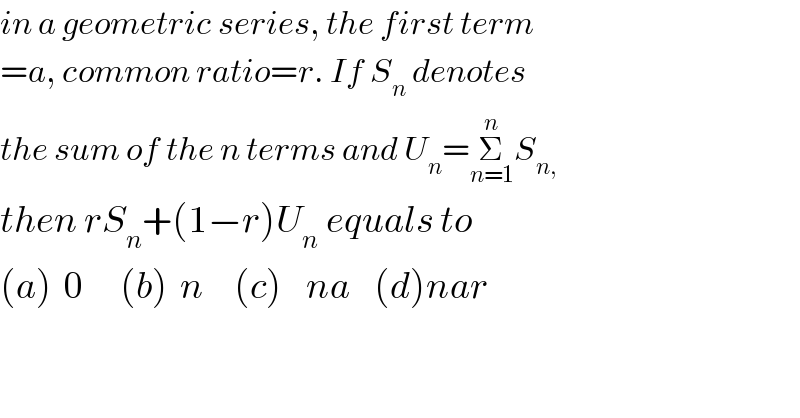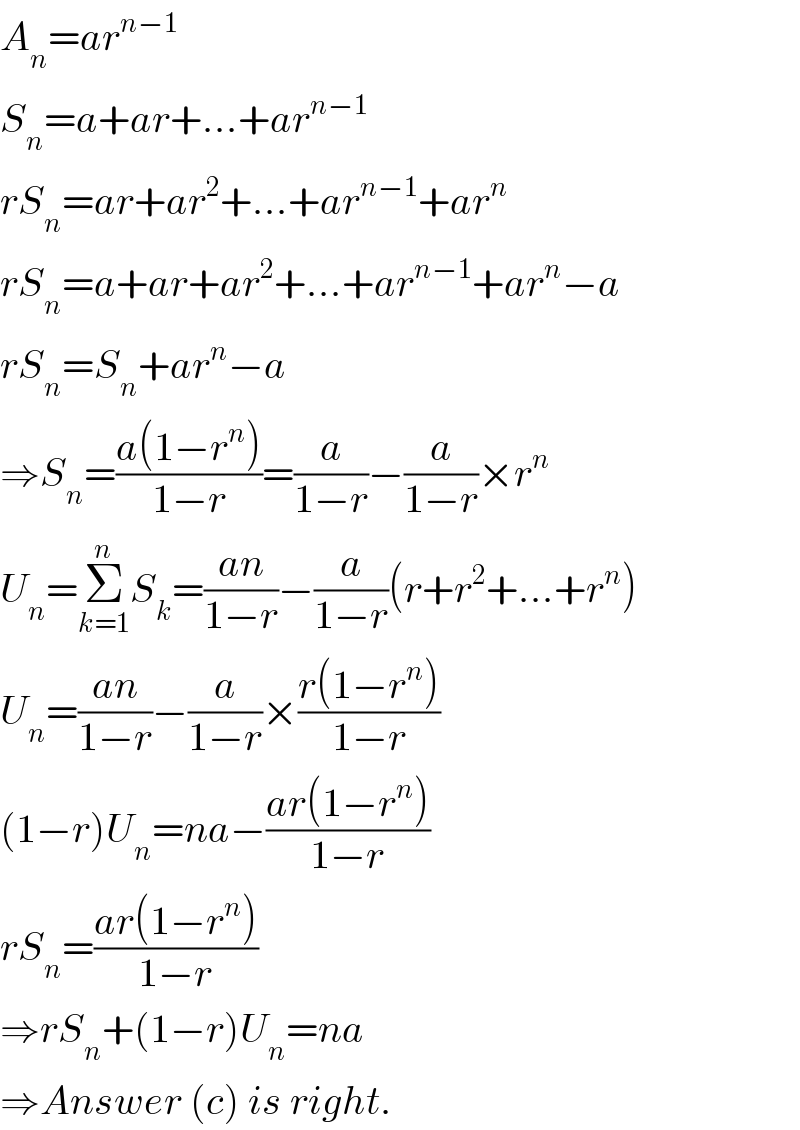
Question and Answers Forum
Question Number 38559 by nishant last updated on 27/Jun/18

Answered by MrW3 last updated on 27/Jun/18

| ||
Question and Answers Forum | ||
Question Number 38559 by nishant last updated on 27/Jun/18 | ||
 | ||
Answered by MrW3 last updated on 27/Jun/18 | ||
 | ||
| ||